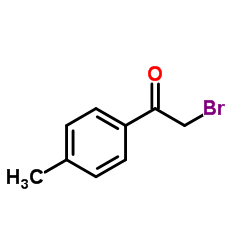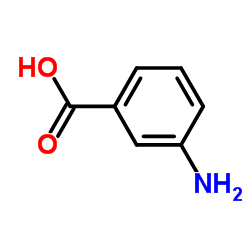329932-55-0
| 中文名 | 3-[(2,4-二硝基苯甲酰基)氨基]-苯甲酸2-(4-甲基 苯基)-2-氧乙基酯 |
|---|---|
| 英文名 | [2-(4-methylphenyl)-2-oxoethyl] 3-[(2,4-dinitrobenzoyl)amino]benzoate |
| 英文别名 | fm19g11 |
| 描述 | FM19G11 是一种 hypoxia-inducible factor-1-alpha (HIF-1α) 抑制剂,在 HeLa 细胞中抑制缺氧诱导的荧光素酶活性,其 IC50 值为 80 nM。当 HIF-1α 途径在常氧条件下失活时,FM19G11 会调节其他信号途径,包括 mTOR 和 PI3K/Akt/eNOS。 |
|---|---|
| 相关类别 | |
| 靶点 |
HIF-1α[1] |
| 体外研究 | FM19G11(30-300nm)抑制HeLa细胞系中的HIFα蛋白[1]。FM19G11(500 n m)促进缺氧条件下少突胶质细胞分化[1]。FM19G11(300 nM;3天)显著抑制缺氧GBM-XD、缺氧T98G和常氧T98G细胞中O6-甲基鸟嘌呤DNA甲基转移酶(MGMT)的mRNA水平[2]。M19G11(300 nM;3天)显著增强替莫唑胺(TMZ)的促凋亡作用,尽管FM19G11本身并不诱导凋亡[2]。细胞活力测定[2]细胞系:GBM-XD和T98G细胞浓度:300 nM孵育时间:3天结果:低氧培养中两种细胞株MGMT表达均显著抑制。正常氧培养的98G细胞中MGMT表达下调。细胞活力测定[2]细胞系:GBM-XD和T98G细胞浓度:300nm孵育时间:3天结果:自身无细胞毒性。增强TMZ对缺氧GBM-XD细胞、缺氧T98G细胞和常氧T98G细胞的细胞毒性。 |
| 体内研究 | FM19G11(髓内注射;1-8周)改善严重脊髓损伤(SCI)的运动能力[3]。FM19G11(髓内注射;8周)诱导GAP43(轴突生长标记物)和RIP(损伤处有髓少突胶质细胞标记物)的表达[3]。 |
| 参考文献 |
| 分子式 | C23H17N3O8 |
|---|---|
| 分子量 | 463.39600 |
| 精确质量 | 463.10200 |
| PSA | 167.60000 |
| LogP | 5.53380 |
| 外观性状 | powder,off-white to light brown |
| 储存条件 | 2-8°C |
|
SECTION 1: Identification of the substance/mixture and of the company/undertaking Product identifiers Product name: FM19G11 REACH No.: A registration number is not available for this substance as the substance or its uses are exempted from registration, the annual tonnage does not require a registration or the registration is envisaged for a later registration deadline.
CAS-No.: 329932-55-0 Relevant identified uses of the substance or mixture and uses advised against Identified uses: Laboratory chemicals, Manufacture of substances SECTION 2: Hazards identification Classification of the substance or mixture Not a hazardous substance or mixture according to Regulation (EC) No. 1272/2008. This substance is not classified as dangerous according to Directive 67/548/EEC. Label elements Labelling according Regulation (EC) No 1272/2008 Pictogramnone Signal wordnone Hazard statement(s)none Precautionary statement(s) none Supplemental Hazardnone Statements The following percentage of the mixture consists of ingredient(s) with unknown acute toxicity: The following percentage of the mixture consists of ingredient(s) with unknown hazards to the aquatic environment: Other hazards - none SECTION 3: Composition/information on ingredients Substances Synonyms: 3-[(2,4-Dinitrobenzoyl)amino]-benzoic acid 2-(4-methylphenyl)-2-oxoethyl ester [2-oxo-2-(p-tolyl)ethyl] 3-[(2,4-dinitrobenzoyl)amino]benzoate Formula: C23H17N3O8 Molecular Weight: 463,4 g/mol CAS-No.: 329932-55-0 No components need to be disclosed according to the applicable regulations. SECTION 4: First aid measures Description of first aid measures General advice Consult a physician. Show this safety data sheet to the doctor in attendance. If inhaled If breathed in, move person into fresh air. If not breathing, give artificial respiration. Consult a physician. In case of skin contact Wash off with soap and plenty of water. Consult a physician. In case of eye contact Flush eyes with water as a precaution. If swallowed Never give anything by mouth to an unconscious person. Rinse mouth with water. Consult a physician. Most important symptoms and effects, both acute and delayed The most important known symptoms and effects are described in the labelling (see section 2.2) and/or in section 11 Indication of any immediate medical attention and special treatment needed no data available SECTION 5: Firefighting measures Extinguishing media Suitable extinguishing media Use water spray, alcohol-resistant foam, dry chemical or carbon dioxide. Special hazards arising from the substance or mixture Carbon oxides, nitrogen oxides (NOx) Advice for firefighters Wear self contained breathing apparatus for fire fighting if necessary. Further information no data available SECTION 6: Accidental release measures Personal precautions, protective equipment and emergency procedures Use personal protective equipment. Avoid dust formation. Avoid breathing vapours, mist or gas. Avoid breathing dust. For personal protection see section 8. Environmental precautions Do not let product enter drains. Methods and materials for containment and cleaning up Pick up and arrange disposal without creating dust. Sweep up and shovel. Keep in suitable, closed containers for disposal. Reference to other sections For disposal see section 13. SECTION 7: Handling and storage Precautions for safe handling Avoid formation of dust and aerosols. Provide appropriate exhaust ventilation at places where dust is formed. For precautions see section 2.2. Conditions for safe storage, including any incompatibilities Store in cool place. Keep container tightly closed in a dry and well-ventilated place. Recommended storage temperature: 2 - 8 °C Specific end use(s) A part from the uses mentioned in section 1.2 no other specific uses are stipulated SECTION 8: Exposure controls/personal protection Control parameters Components with workplace control parameters Exposure controls Appropriate engineering controls Handle in accordance with good industrial hygiene and safety practice. Wash hands before breaks and at the end of workday. Personal protective equipment Eye/face protection Use equipment for eye protection tested and approved under appropriate government standards such as NIOSH (US) or EN 166(EU). Skin protection Handle with gloves. Gloves must be inspected prior to use. Use proper glove removal technique (without touching glove's outer surface) to avoid skin contact with this product. Dispose of contaminated gloves after use in accordance with applicable laws and good laboratory practices. Wash and dry hands. The selected protective gloves have to satisfy the specifications of EU Directive 89/686/EEC and the standard EN 374 derived from it. Body Protection Choose body protection in relation to its type, to the concentration and amount of dangerous substances, and to the specific work-place., The type of protective equipment must be selected according to the concentration and amount of the dangerous substance at the specific workplace. Respiratory protection Respiratory protection is not required. Where protection from nuisance levels of dusts are desired, use type N95 (US) or type P1 (EN 143) dust masks. Use respirators and components tested and approved under appropriate government standards such as NIOSH (US) or CEN (EU). Control of environmental exposure Do not let product enter drains. SECTION 9: Physical and chemical properties Information on basic physical and chemical properties a) AppearanceForm: solid b) Odourno data available c) Odour Thresholdno data available d) pHno data available e) Melting point/freezing no data available point f) Initial boiling point and no data available boiling range g) Flash pointno data available h) Evapouration rateno data available i) Flammability (solid, gas) no data available j) Upper/lowerno data available flammability or explosive limits k) Vapour pressureno data available l) Vapour densityno data available m) Relative densityno data available n) Water solubilityno data available o) Partition coefficient: n- log Pow: 3,431 octanol/water p) Auto-ignitionno data available temperature q) Decompositionno data available temperature r) Viscosityno data available s) Explosive propertiesno data available t) Oxidizing propertiesno data available Other safety information no data available SECTION 10: Stability and reactivity Reactivity no data available Chemical stability Stable under recommended storage conditions. Possibility of hazardous reactions no data available Conditions to avoid no data available Incompatible materials Strong oxidizing agents Hazardous decomposition products Other decomposition products - no data available In the event of fire: see section 5 SECTION 11: Toxicological information Information on toxicological effects Acute toxicity no data available Skin corrosion/irritation no data available Serious eye damage/eye irritation no data available Respiratory or skin sensitisation no data available Germ cell mutagenicity no data available Carcinogenicity IARC:No component of this product present at levels greater than or equal to 0.1% is identified as probable, possible or confirmed human carcinogen by IARC. Reproductive toxicity no data available Specific target organ toxicity - single exposure no data available Specific target organ toxicity - repeated exposure no data available Aspiration hazard no data available Additional Information RTECS: Not available To the best of our knowledge, the chemical, physical, and toxicological properties have not been thoroughly investigated. SECTION 12: Ecological information Toxicity no data available Persistence and degradability no data available Bioaccumulative potential no data available Mobility in soil no data available Results of PBT and vPvB assessment PBT/vPvB assessment not available as chemical safety assessment not required/not conducted Other adverse effects no data available SECTION 13: Disposal considerations Waste treatment methods Product Offer surplus and non-recyclable solutions to a licensed disposal company. Dissolve or mix the material with a combustible solvent and burn in a chemical incinerator equipped with an afterburner and scrubber. Contaminated packaging Dispose of as unused product. SECTION 14: Transport information UN number ADR/RID: -IMDG: -IATA: - UN proper shipping name ADR/RID: Not dangerous goods IMDG: Not dangerous goods IATA:Not dangerous goods Transport hazard class(es) ADR/RID: -IMDG: -IATA: - Packaging group ADR/RID: -IMDG: -IATA: - Environmental hazards ADR/RID: noIMDG Marine pollutant: noIATA: no Special precautions for user no data available SECTION 15 - REGULATORY INFORMATION N/A SECTION 16 - ADDITIONAL INFORMATION N/A |
| 危险品运输编码 | NONH for all modes of transport |
|---|
|
~52% 
329932-55-0 |
| 文献:Fundacion De La Comunidad Valenciana Centro De Investigacion Principe Felipe; Instituto de Salud Carlos III; Universidad de Valencia Patent: EP2292587 A1, 2011 ; Location in patent: Page/Page column 16 ; |
|
~% 
329932-55-0 |
| 文献:Fundacion De La Comunidad Valenciana Centro De Investigacion Principe Felipe; Instituto de Salud Carlos III; Universidad de Valencia Patent: EP2292587 A1, 2011 ; |
|
~% 
329932-55-0 |
| 文献:Fundacion De La Comunidad Valenciana Centro De Investigacion Principe Felipe; Instituto de Salud Carlos III; Universidad de Valencia Patent: EP2292587 A1, 2011 ; |
|
~% 
329932-55-0 |
| 文献:Fundacion De La Comunidad Valenciana Centro De Investigacion Principe Felipe; Instituto de Salud Carlos III; Universidad de Valencia Patent: EP2292587 A1, 2011 ; |
| 上游产品 4 | |
|---|---|
| 下游产品 0 | |






